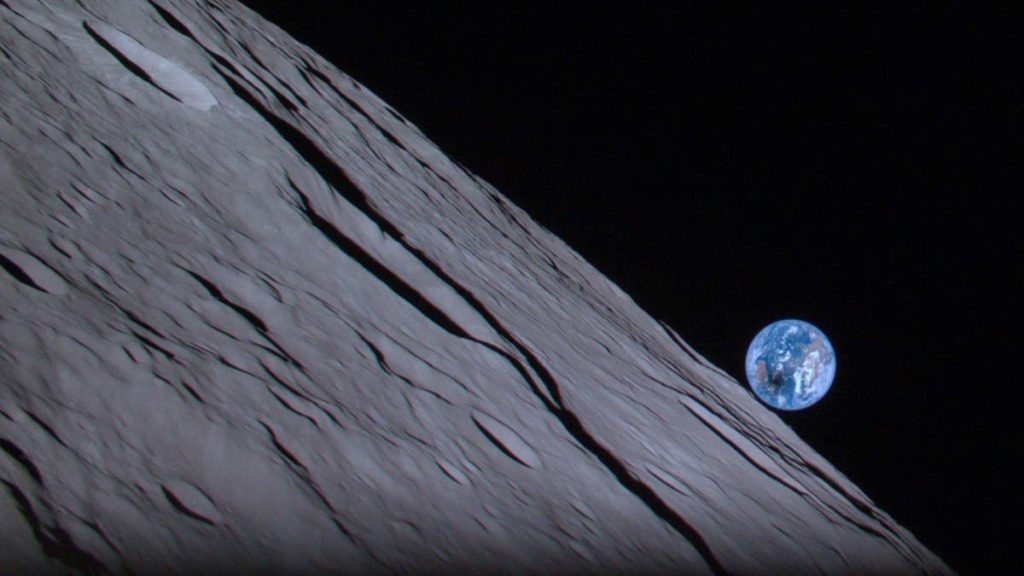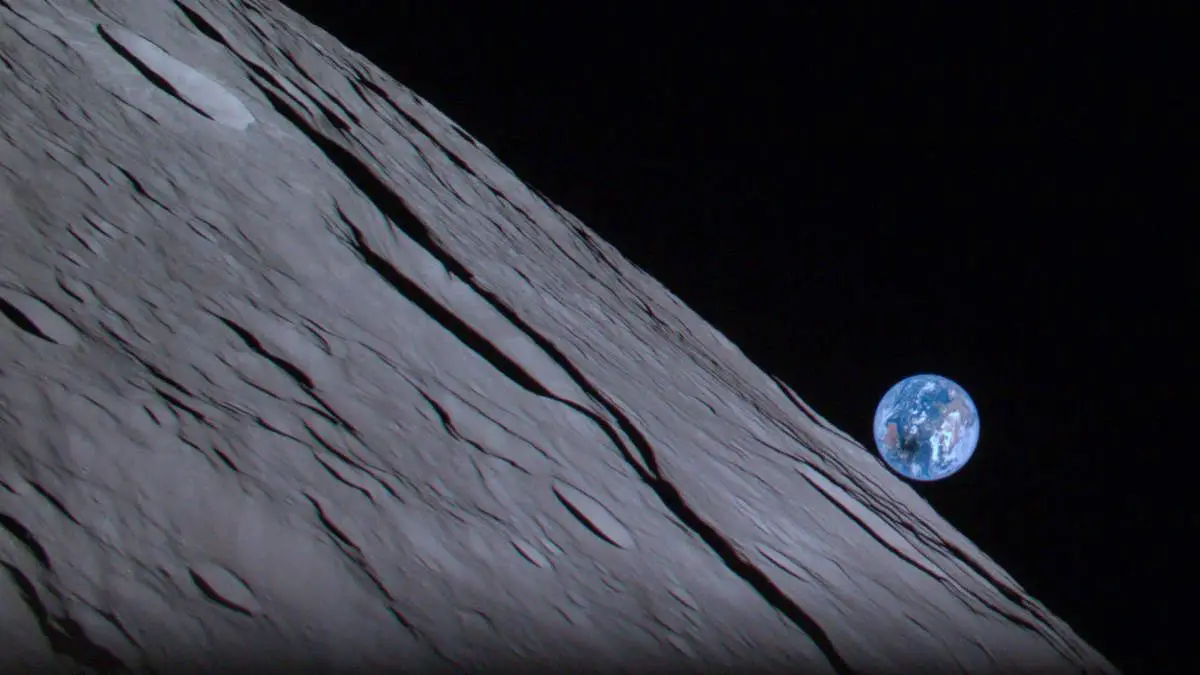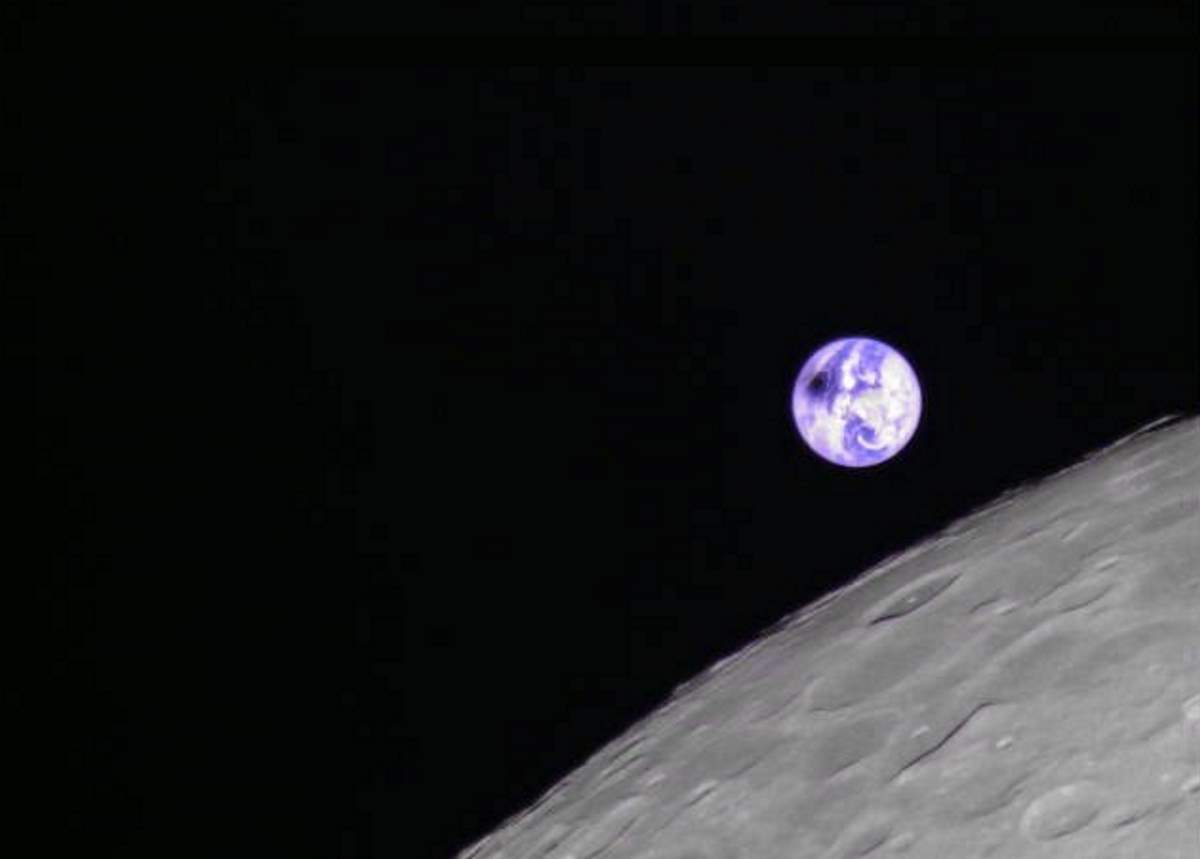Japan’s ispace Hakuto-R Mission 1 lander captured this stunning photo in orbit around our Moon while a solar eclipse was occurring on Earth last week (September). You can see the Moon’s dark shadow passing above Australia as a dark smudge.
Capturing a Solar Eclipse from the Moon’s Orbit: The Hakuto-R Mission 1
In a remarkable feat of space exploration and photography, Japan’s ispace mission, Hakuto-R, captured a stunning image of a solar eclipse from the moon’s orbit. This photo, taken on April 20, shows the Moon’s shadow passing over Australia, appearing as a dark smudge from this unique vantage point.

The phenomenon of a solar eclipse, as observed from the Earth, occurs when the Moon passes across the sun, casting a shadow on the Earth’s surface. However, this image offers a different perspective, showing what is termed as a “lunar Earthrise during a solar eclipse,” taken from an altitude of about 100 km (60 miles) above the lunar surface.
The Journey of Hakuto-R Mission 1
Hakuto-R Mission 1, a bold endeavor by ispace, represents a significant milestone in private space exploration. Launched in December 2022, this uncrewed lunar landing mission aimed to make history with a landing in April 2023. Although the mission faced challenges, with communication lost during the descent’s final seconds, it achieved several notable accomplishments.
The mission marked the furthest a privately funded spacecraft has traveled, covering approximately 1,400,000 kilometers (870,000 mi). Its journey began with engineer Andrew Barton’s vision in 2008, who aimed to win the Google Lunar X Prize with a privately-funded rover on the Moon. This international endeavor evolved into ispace, founded by Takeshi Hakamada in 2010. Despite setbacks and the expiration of the Google Lunar X Prize deadline in 2018, the team persevered, ultimately leading to ispace’s placement on the Tokyo Stock Exchange in April 2022.
Lander Specifications and Payloads
The Hakuto-R lander, measuring 2.3 meters (7.5 feet) tall and 2.6 meters (8.5 feet) wide, was a technological marvel. Weighing around 1,000 kilograms (2,200 lb) with its payload and fuel, it was designed for a stable landing with four legs and a main thruster. Launched aboard a Falcon 9 rocket, it carried payloads from the Emirates Lunar Mission rover Rashid and the Japanese transformable lunar robot SORA-Q. Additionally, it housed a unique payload – a music disc featuring ‘SORATO’ by Sakanaction, a nod to the team’s Google Lunar X Prize campaign.
The Journey to the Moon
ispace selected the Atlas crater in the Mare Frigoris region for its landing attempt, with backup locations in Lacus Somniorum, Sinus Iridum, and Oceanus Procellarum. Opting for a fuel-conserving slower approach, the mission entered lunar orbit in March 2023 after a five-month journey. During the descent, a communication error led to a misleading live stream showing Lacus Somniorum as the landing site, whereas the actual attempt was near the Atlas crater.
The Final Moments
Tragically, the lander lost communication during its final descent at 16:40 UTC on April 25. A misjudgment by the onboard computer, disregarding the radar altimeter’s data, led to the lander crashing when it ran out of propellant. The crash site was later identified by the Lunar Reconnaissance Orbiter (LROC) team.
Understanding Solar Eclipses
Solar eclipses are a captivating astronomical event where the Moon moves between the Earth and the Sun, temporarily obscuring the Sun’s light. From Earth, this can be observed as a total, partial, or annular eclipse, depending on the alignment and distances between the three celestial bodies. However, the perspective from the Moon, as captured by Hakuto-R, offers a unique view – the Earth’s surface darkened by the Moon’s shadow during an eclipse. This perspective not only provides valuable scientific data but also a profound reminder of our place in the cosmos.
Sources
- HAKUTO-R Mission 1 on the iSpace website
- Hakuto-R Mission 1 on Wikipedia
- “Hakuto-R sees solar eclipse from Moon” on The Planetary Society website
- Rare hybrid solar eclipse and Earthrise captured from the moon by a private Japanese lunar lander (photo) on Space.com
- Moon Landings: All-Time List [1966-2025] - February 2, 2025
- What Is Max-Q and Why Is It Important During Rocket Launches? - January 16, 2025
- Top 10 Tallest Rockets Ever Launched [2025 Update] - January 16, 2025

